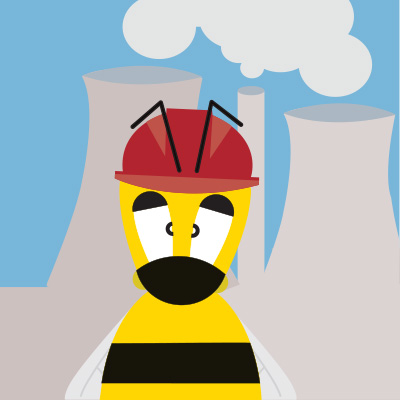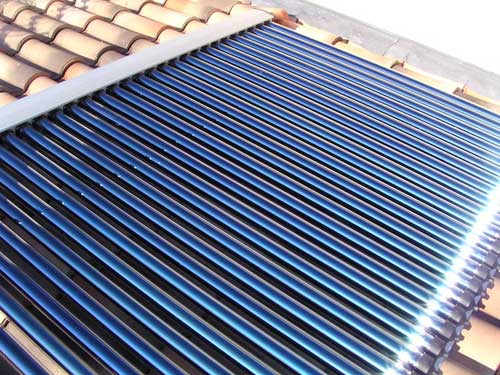Site Prices Update
Last Updated28th June 2022
All calculations on this site are based on current fuel prices, they are checked regularly and calculations are automatically updated.
The costs calculated based on these fuel prices should be regarded as 'good estimates', given that fuel prices vary in different parts of the county and at different time of the year.
The calculations also have different levels of accuracy depending on the nature of the calculation. For example calculating the energy use of a known power output TV is very easy compared to calculating the effect on energy savings when insulating a cavity wall.
Site Calculations
Set Your Own Prices
User PricesFor several of the fuel prices on this site you can now set your own prices and all the calculations on the site will adjust accordingly.
Set Prices
At Confused About Energy we aim to provide practical, impartial advice on all aspects of energy usage, climate change and ways to save money on energy bills.
All calculations on this site are based on current fuel prices they are checked regularly are automatically updated and were last changed on:-
28th June 2022
The costs calculated based on these fuel prices should be regarded as 'good estimates', given that fuel prices vary in different parts of the county and at different time of the year.
The calculations also have different levels of accuracy depending on the nature of the calculation. For example calculating the energy use of a known power output TV is very easy compared to calculating the effect on energy savings when insulating a cavity wall.
Site Calculations
| Electricity | £0.271 per unit (1 kWh) |
| Economy Electricity | £0.094 per unit (1 kWh) |
| Gas | £0.072 per unit (1 kWh) |
| Domestic LPG | £0.122 per unit (1 kWh) |
| Heating Oil | £0.104 per unit (1 kWh) |
| UK Grid CO2 Emissions | 0.233 kg per kWh used |
The main units used in this site are in the table below, For a complete explanation of power and energy Read More.
| Unit | Name | Detail |
|---|---|---|
| W | Watt | Unit of Power |
| kW | Kilowatt | 1000 watts |
| kWh | Kilowatt hour | Measure of Energy |
| L | Litre | Measure of Volume |
Please use twitter to ask a question Message @@EnergyThinking

|
Cost: High
ROI: 6 to 37 Years (No RHI)
Skill: Specialist
Energy Saving: Medium
CO2e Saving: High
|
ROI is the time it takes to return the investment in fuel savings for an average gas heated 3 bed semi-detached house and assumes no government incentive schemes are used: Years
How easy this is to do: DIY-Easy : DIY-Skilled : Specialist
How much energy will be saved with this measure: Low : Medium : High
How much Carbon Dioxide emission will be saved with this measure: Low : Medium : High
What is Solar hot Water?
Before we start on what, we need to cover where. Solar Hot Water is used all over the world, it is very effective especially if you live in a warm country, this article is about the UK where solar hot water is much less effective option than in for example Spain. We also do not cover any grant schemes here (Renewable Heat Incentive, RHI), they are changed to often! With a grant scheme you will find that an installation will be more cost effective.
The terms solar energy and solar power are often used to describe technologies which collect the energy of the sun and redistribute it for our use. These terms are however a little ambiguous. Solar energy effectively drives our whole planet, wind, wave and fossil fuels could ultimately be regarded as solar energy. For the purposes of this site our only concern is for solar energy that can be collected directly by our dwelling and used to, for example, heat water or to drive our electric devices. For this article on solar thermal only heating hot water is considered. Please follow the link to take a look at Solar Photovoltaic’s
To collect this energy a method is required to collect photons of light and to convert the energy in this light into another form of energy for storage or use.
For domestic properties there are two main methods of collecting solar energy to heat water glazed flat plate collectors (thermal plate) and evacuated tube collectors (thermal tube), they both absorb the light energy and convert it to heat, the main difference with an evacuated tube system is that they operate in a similar way to a vacuum flask, the vacuum inside the tube collectors insulating the fluid against heat loss.
Financially are they worth it?
Over a year in the UK the amount of solar radiation hitting the surface of the earth varies enormously, we all know that! At its peak it is about 8 kWh/m2 on the best day and 100 times less than that on the worst, i.e. 0.08 kWhm2. Taking into account the amount of useful radiation, i.e. the radiation that the thermal collector can convert to heat and heat loss factors a total efficiency of about 30 to 40% is generally accepted. This means that only 30% to 40% of the radiation falling onto the area of the panel goes into heating the water. The grapic shows light energy availiable across Europe assuming that a panal is optimally inclined at about 38 degrees and is south oriented.

A reasonable estimate for energy use to provide a family of four with hot water is about 10 kWh each day or about 3500 kWh per year, taking a few days off for holidays. So on a sunny day taking into account efficiency factors you would get away with a 4m2 panel to provide all your hot water, and on a dull winter day, you would require a 2600 m2 panel. The latter is clearly impractical, on space and cost grounds, and not forgetting heat loss! In practical terms for about one third of the year the heat output from a solar thermal system is zero in the UK. It is also fairly obvious that if you have, as in the example table below, a 6m2 panal an you use 10 kWh hot water each day, then you will not use all the potential of the system.
The graph just below shows the variation in light energy each day throughout the year for a point in the middle of England

Exact numbers are very difficult with solar because of the variability of the climate and personal use habits. But for a modest 6m2 thermal collection system costing about £5000 installed, optimistically you may get 25% of your annual hot water requirement from the system, for the family of four this is 750kWh. If you had used natural gas to heat your water, you would have saved £54
(157.5kg) , with LPG,
£91.5
(180kg) and with standart tariff electricity,
£203.25
(174.8kg) .
Not much, is it? If your system cost £5000 and your main fuel is LPG it would take about 50 year to pay back the investment, not including all the maintenance cost, and will it last that long? Money is not the whole story, the CO2 emission savings are pretty good (the numbers in brackets). But would it be your first choice to save money and reduce emissions, we would argue not. Insulate your loft or walls First.
The tables below gives more data with consideration for the different light levels in the UK, the further south you are the better. Well in terms of light levels. The value for the light energy availiable in these tables assume that the panal is optimally inclined at about 38 degrees and is south oriented. The table also assumes that all of the potential incident solar radiation is useful and this is probably not the case.
| Light energy avaiable to you see graphic above kWh/m2 per year | 900 | 1000 | 1100 | 1200 |
|---|---|---|---|---|
| Light energy incident on a 6m2 panel * kWh | 5400 | 6000 | 6600 | 7200 |
| Light capture efficiency, or Gross efficiency over full area of solar collector | 50% | 50% | 50% | 50% |
| Energy captured by the collector kWh/m2 per year | 2700 | 3000 | 3300 | 3600 |
| Working efficiency how much of this light energy converts to usable hot water | 70% | 70% | 70% | 70% |
| Energy converted to useable hot water kWh | 1890 | 2100 | 2310 | 2520 |
| Equivalent Price if you use Gas | £136.08 (396.9kg) |
£151.2 (441kg) |
£166.32 (485.1kg) |
£181.44 (529.2kg) |
| Equivalent Price if you use Standard Electric | £512.19 (440.4kg) |
£569.1 (489.3kg) |
£626.01 (538.2kg) |
£682.92 (587.2kg) |
| Equivalent Price if you use LPG | £230.58 (453.6kg) |
£256.2 (504kg) |
£281.82 (554.4kg) |
£307.44 (604.8kg) |
| Indicative installed cost (£ ) | 5000 | 5000 | 5000 | 5000 |
| Payback period (years) if you use Gas | 37 | 33 | 30 | 28 |
| Payback period (years) if you use Standard Electric | 10 | 9 | 8 | 7 |
| Payback period (years) if you use LPG | 22 | 20 | 18 | 16 |
| Light energy avaiable to you see graphic above kWh/m2 per year | 900 | 1000 | 1100 | 1200 |
|---|---|---|---|---|
| Light energy incident on a 6m2 panel * kWh | 5400 | 6000 | 6600 | 7200 |
| Light capture efficiency, or Gross efficiency over full area of solar collector | 70% | 70% | 70% | 70% |
| Energy captured by the collector kWh/m2 per year | 3780 | 4200 | 4620 | 5040 |
| Working efficiency how much of this light energy converts to usable hot water | 60% | 60% | 60% | 60% |
| Energy converted to useable hot water kWh | 2268 | 2520 | 2772 | 3024 |
| Equivalent Price if you use Gas | £163.296 (476.3kg) |
£181.44 (529.2kg) |
£199.584 (582.1kg) |
£217.728 (635kg) |
| Equivalent Price if you use Standard Electric | £614.628 (528.4kg) |
£682.92 (587.2kg) |
£751.212 (645.9kg) |
£819.504 (704.6kg) |
| Equivalent Price if you use LPG | £276.696 (544.3kg) |
£307.44 (604.8kg) |
£338.184 (665.3kg) |
£368.928 (725.8kg) |
| Indicative installed cost (£ ) | 5000 | 5000 | 5000 | 5000 |
| Payback period (years) if you use Gas | 31 | 28 | 25 | 23 |
| Payback period (years) if you use Standard Electric | 8 | 7 | 7 | 6 |
| Payback period (years) if you use LPG | 18 | 16 | 15 | 14 |
Solar thermal energy id definitely worth it! No matter what part of the country you are from you can always save money by investing in solar thermal energy. There is a company called silicon solar and they now have offices on both the East and West coast and they have sold their products all across the country because they are simply the best and most high end solar manufacturer in the market. Definitely check out their website and take a look at their competitive prices!www.siliconsolar.comwww.sunmaxxsolar.com
Hi there,I'm enjoying looking around your excellent web site - however I'm interested to understand the calculation parameters you've used to calculate the Solar gain. The figures suggested in Energy converted to usable hot water in kWh are considerably higher than in any SAP calculation in fact the figures mentioned above would almost certainly be unachievable according to SAP for any standard twin coiled hot water cylinder. Therefore if possible would it be possible to see the calculations behind the figures above?We are currently going for SAP Appendix Q recognition with our unique and patented Solar 3C solution and are in regular communication with BRE regarding low temperature heating with Solar Thermal, so if possible I would very much welcome chatting through the benefits of Solar 3C and how it may add clarity to the Solar Thermal/PV tables plus it may change the negative downward thumb to a positive thumbs up in terms of payback.Historically and as confirmed by BRE, Solar Thermal has always suffered from the restriction of the medium used to hold the energy collected and then in the vast majority of cases this is only used for hot water via twin coil cylinders. Thermal Stores accept solar energy however due to their very high standing temperatures (just to be able to deliver any useable hot water) the solar contribution annually is virtually worthless.Solar 3C is different - it's a 3-coiled unvented hot water cylinder (2 input coils middle & bottom + 1 output coil at the top) any/all spare energy instead of either sitting in the cylinder all day doing nothing or slowly passing through the cylinder wall (heat loss) can be used to contribute towards space heating. By way of an example, if there was just 35degrees available on the roof/at the thermal collector, this would roughly equate to a maximum achievable cylinder temperature of around 31degrees C not hot enough for washing, bathing or showering however ideal for use with an Underfloor Heating system - therefore in this example when there would not have been enough energy to provide hot water and where the cylinder would require a back-up source to top up the temperature it would have been able to contribute potentially all day to the UFH and providing space heating (end users largest energy consumption costs) - at the end of the in this example the back-up souce would still be required to top up the cylinder for hot water just as it would have had the energy available on the roof not been used for space heating. Solar 3C therefore extends the annual window of solar yield significantly especially when installed in New Build properties with Underfloor Heating - Solar 3C would contribute more to the space heating than it could ever do for hot water because of the cooler running temperatures required for the UFH. Solar 3C is not limited to UFH because the weather compensator that makes up the Solar 3C controller will call for low grade or temperature heating even when installed with radiators or indeed in a retrofit heating system.The use of Solar 3C is extended further by the use of the ImmerSun switch whereby any Solar PV export is sent to an immersion heater (instead of being exported back to the national grid) this energy can then either be used to pasteurise the cylinder helping to protect against legionella or be used directly for space heating rather than just hot water - this potentially trebles the value of the PV export. With all of the above in mind I would very much welcome the opportunity to chat through the figures in your Solar chart and see if we can change the negative down pointing thumb for Solar Thermal to a positive THUMBS UP?? Just as hot water cylinders have evolved through time, from 0 coil (direct) to 1 coil for just boiler and no Solar, 2 coil boiler/heat pump and solar but no space heating to, 3 coil boiler/heat pump and solar PLUS space heating!! It's as obvious and easy as 1, 2, Solar 3C!!Thank you in advance for taking the time to read the aboveMatt (m 07850 741213)www.solar3c.com
If anyone is considering the choice between solar pv and solar heating,choose solar pv and fit a device that recognises when the pv sustem is exporting back to the grid and then feeds this surplus electricity through your immersion heater,free solar heating for an extra outlay of £500 for the device























Comments and Questions